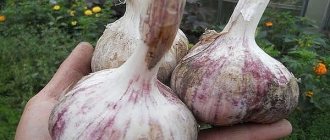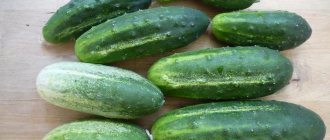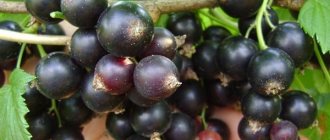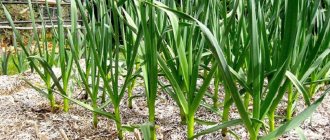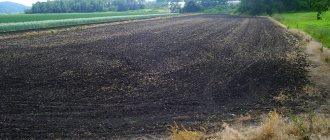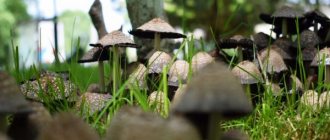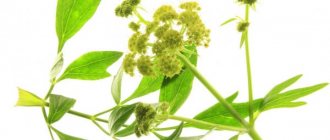In gardens and orchards, perhaps, there is no vegetable more wonderful than the vegetable that bears the name of the main character in the novels of the 19th century French writer Ponson do Terraia - Rocambole. Like its namesake, the rocambole vegetable is also something of an adventurer.
While collecting data on this crafty garlic, I encountered a certain paradox: there is no consensus on its name. In each country it is called differently, even in the names used in our country you can get confused.
Every gardener is convinced that he is the one who grows rocambola ; each one describes a different plant.
Elephant garlic. Rockambole
What is rocambole and how to grow it
Until recently, few gardeners knew about the existence of a hybrid onion + garlic, or rather onion called Rocambole . Whatever they call it: Egyptian garlic, Spanish onion, onion garlic, hardneck garlic, Elephant garlic.
Note! The plant that we call rocambole actually has nothing in common with the European rocambole garlic, but is an elephant garlic with an impressive size. This is one of the most exotic relatives of garlic and onions.
One of the main features of Rockambol is its considerable size. Huge teeth, delicate taste and aroma, high yield attract many gardeners. Due to its mild taste, it is easier to use in culinary experiments than our garlic. But you can’t get a good harvest without a special approach to growing it.
Rocambole: How to Grow Elephant Garlic.
According to research results, the size of one clove of this hairstyle onion reaches 15 cm, provided that there are no more than three of them in the bulb. In most cases, the number of cloves is 6 pcs. The one-toothed bulb is larger than a tennis ball and weighs up to 400 g.
Distinctive features
This garlic looks almost like a leek. It is distinguished by the presence of thick stems and fleshy leaves. The stem produces a large arrow, topped with a beautiful spherical inflorescence of soft purple color.
The head of the plant is very similar to garlic, and is divided into individual very juicy cloves. The slices have a mild taste and are unusually large in size – up to 15 cm in length. The plant can reach a height of more than 50 cm. It is customary to use not only the bulb itself, but also the stems for food.
This amazing onion garlic is very unpretentious, so it is quite easy to grow it in any soil. The plant reproduces by dividing the head and by children, which appear in the first year. You can harvest as soon as the leaves begin to turn yellow. To ensure that the nutrition of the bulb is not disrupted, it is better to break off the inflorescence immediately.
Rocambole or elephant garlic: what to call it correctly
Understanding what rockambol is is not easy. Over the years of its positioning and selling as giant garlic, there has been so much confusion that both here and in the West almost half a dozen different plants are called rocambola.
Giant “garlic,” which has spread among us as rocambole, is a large-fruited, powerful type of onion, in which the bulb is divided into large cloves, and the taste and aroma are vaguely reminiscent of garlic or a mixture of garlic and leeks.
In the West, rocambole garlic is called garlic “with true taste” - very hot and aromatic, poorly preserved, with light purple but small heads. It is a variety of true garlic (Allium sativum var. ophioscorodon, a relative of white-purple garlic).
Simply rocambole (rocambole) - a French culinary star, forgotten and revived in Finland - is called hair onion (Allium scorodoprasum) - an interesting type of onion with medium-sized onions divided into cloves.
Rocambole is also called Sand Leek, or Korean pickled -peel garlic. Its ovoid bulbs, even in varieties, reach a diameter of 5 cm, but they can hardly be called gigantic.
Rocambole is a variety of garlic that is known for its size.
Truly huge bulbs with often egg-sized cloves form a completely different type of onion with a slight garlicky taste and aroma - elephant garlic (Allium ampeloprasum). It does not belong to the genus of garlic, but it is precisely this that is our “rocambole” - giant garlic , snake garlic , Spanish onion , Egyptian onion , Gulliver’s garlic .
At the same time, all three types of plants continue to be confused and falsely synonymized, even managing to replace elephant onions with Suvorov onions, grape onions, anzur and large-fruited varieties of garlic...
Varieties and varieties
Gardeners grow many different varieties and hybrids. Only one variety, “coiffure onion” (Allium scorodoprasum L.), is included in the state register of breeding achievements that are approved for use today, but in practice other varieties are also used.
- Variety "Pearl"
In the register since 2006, the patent holder is the State Scientific Research Institute of Breeding and Seed Production of Vegetable Crops, according to the characteristics - a spicy variety, a horticultural crop. Bred specifically for Siberia.
The variety is mid-season, produces an arrow, has a light green leaf with a faint waxy coating, 45-60 cm long, 3-4 cm wide. The bulb is large, rounded-flat, the color of the covering scales is white, the flesh is yellowish.
The mass of the bulb is approximately 50 g, in the bulb there are 4-6 cloves weighing 12 g each. Under the covering scales, from 3 to 5 children weighing up to 1.5 g are formed.
The taste is sharp, the yield is 1.9 kg/sq. m, frost-resistant variety.
This variety cannot be found in mass sales. The bulbs of this variety are not half a kilo, like elephant garlic, common in the USA and Europe.
- White Elephant hybrid is a product of selection by Belarusian specialists. Not included in the register of the Republic of Belarus. But it has good qualities: a large onion, up to 150-200g. Does not give flower arrows. Resistant to cold weather and fusarium, suitable for regions with short summers.
- Variety "Janichar" - released in 2021. It has a very large onion – up to 0.5 kg, and immunity to viral and fungal diseases. But it does not tolerate cold weather.
The best imported varieties include:
- Red Rocambole - 8-10 large cloves per bulb, grows better in high humidity conditions than other varieties. Large uniform bulbs, strong, spicy taste.
- Ukrainian Rocambole - medium-sized bulbs with 8-9 segments. Tolerant to weather conditions, resistant to diseases. It has a full flavored taste, spicy aroma. Disadvantage: short shelf life.
- Garlic Montana Giant garlic is a product of Italian selection, characterized by large cloves. There are an average of 5-7 of them in one head. The diameter of the head is 6 cm. The shell is white and pink, easily separated from the pulp. The taste is sharp and pleasant. The aroma is strong, garlicky. The variety is great for cooking.
Hybrid variety “Garlic Montana Giant”
Variety "Pearl"
When purchasing seed material, you need to consult with the manufacturer of the product to find out the characteristics of a particular variety or hybrid.
History of origin and description and interesting facts
Elephant Garlic , or Elephant Giant Garlic - Allium ampeloprasum - is a large perennial species of edible onion.
Rocambole came to Russia from Central Asia, where it has been used in cooking since ancient times. In the 18th century, the plant began to be grown in the Northern Caucasus and European countries. Onion garlic was first recognized in Russia in 1877; before that time, the vegetable was an oriental exotic.
On a note! The ancient Egyptians believed that Rocambole had magical properties and used it widely in medicine.
Onion garlic is distributed almost evenly around the world. Most often it can be found in the south and west of Europe, in the Crimea, and the Caucasus.
Rocambol is most common in the countries of Central Asia, where it is used in cooking and medicine. It is also popular in Siberia, but is rarely found in vegetable gardens and greenhouses in the middle zone.
Its aerial parts are reminiscent of leeks. Very large bulbs weighing from 200 g with a diameter of at least 10 cm with light “papery” shells are divided into 4-6 very large teeth.
Elephant Garlic: This is a hybrid of leek and garlic.
A powerful, thickened, tall stem rises 1-2 m, a third of the height is completely hidden by leaf sheaths. In our “rocambole” garlic, they are flat, linear, large, gradually narrowing, surprising with a width of more than 1 cm, a bluish-cold color and rough edges. The leaves end approximately at the height of the middle of the stem, emphasizing the tall inflorescence.
Elephant onions vegetate for 120 days, sometimes only 100-110 days.
Elephant garlic is not propagated by seeds: they may not form at all or remain sterile. But one bulb forms at least 10 (up to 40) children with a very hard, bright, orange shell on the outside - under the outer scales and on the bottom. When propagated by tines, this onion produces divided bulbs in the first year. When sowing children, one-toothed bulbs grow in the first year, and ordinary bulbs grow in the second year.
The inflorescences of "rocambole" are similar to leeks and anzura, with a quickly falling sheath and a stunningly decorative round inflorescence with light purple bell-shaped flowers sitting on very long pedicels. The stamens and style are short.
“Rocambole” inflorescences with a quickly falling sheath and a decorative round inflorescence with light purple bell-shaped flowers.
Rocambole tastes like both onion and garlic at the same time. The spiciness is muted, resulting in a pleasant combination. The smell is soft and not intrusive. At the same time, all culinary properties are preserved, and all dishes where onions and/or garlic could be added will be perfectly complemented with Rocambole.
Hair onions can be consumed fresh or pickled. Both the bulb and the leaves are edible. Rocambole will serve as an excellent seasoning for meat dishes, salads and canning. Suitable for all types of processing.
As for its usefulness, Rocambole has all the medicinal properties of ordinary garlic; in addition, this vegetable contains a large amount of vitamins, essential oils, ascorbic acid and many other useful elements.
Chemical composition
The benefits and harms of Rocambole garlic are determined by the composition of the vegetable. Among the main substances present in fruits and leaves are:
- fiber;
- proteins and carbohydrates;
- vitamins B1, B2, B5 and B4;
- tocopherol;
- calcium and magnesium;
- ascorbic acid;
- selenium and manganese;
- vitamins PP and K;
- iron, copper, zinc and sodium;
- potassium;
- phytoncides;
- saponins;
- caffeic and chlorogenic acids;
- allicin;
- rutin and quercetin;
- ferulic acid.
The nutritional value of Rocambole elephant onion is 149 calories per 100g.
Useful properties of carom
It was not for nothing that hair onion was used in medicine in Ancient Egypt; it contains a large amount of vitamins and vital substances.
Beneficial features:
- vitamin composition - A, C, E, B1, B2, PP, B9, B5;
- high content of carotene and iron;
- natural antiseptic and antibiotic;
- rich in essential oils.
On a note! When consumed frequently, onion garlic keeps blood vessels toned, making their walls elastic, and inhibits the formation of blood clots. Rocambol is indicated for heart diseases.
Cholesterol is reduced, the immune system is strengthened, and the functioning of the gastrointestinal tract improves. In case of illness, this garlic will save you from a runny nose and, thanks to its essential oils, will relieve nasal congestion.
Rocambole improves appetite, as it enhances the production of gastric juice, but does not contain the unpleasant odor characteristic of onions and garlic after consumption.
External use is also popular: it strengthens hair and helps awaken hair follicles.
Benefits and harms
Onion garlic Rocambole is definitely a useful plant for humans. It can and should be eaten by adults and children. Its fruits contain a set of vitamins: A, C, E. Rocambole is rich in iron, carotene, essential oils, and substances that have antiseptic properties.
Medicinal properties of onion-garlic:
- Blood thinning. As a result, the risk of thrombosis, disruptions in the functioning of the heart and blood vessels is reduced.
- Enrichment of blood with allicin. It is a powerful antioxidant that helps lower cholesterol.
- Antiviral property. Rocambol contains phytoncides - substances that suppress the mouth and the development of bacteria. Together with the hair vegetable, it will be easier to fight the flu in a child or an adult.
- Antiseptic property. Rocambol actively fights dysentery, typhoid, yeast, and staphylococcus.
- Effective treatment for runny nose. Giant garlic contains essential oils. There is no need to squeeze the juice or drip it into your nose; just inhale the smell of the vegetable.
- Antihelminthic action. Rocambole expels parasites from the intestines, but does not have a detrimental effect on its flora.
- Used as a hair mask. For the procedure, you need to make a paste from the cloves and apply it to your hair.
To get the maximum benefit from eating Rocambol, you should not eat too much of it.
Excessive consumption of onion garlic can lead to negative consequences:
- diarrhea;
- decreased vision;
- vascular spasms;
- exacerbation of chronic gastrointestinal diseases;
- renal and hepatic colitis;
- dermatoses of an allergic nature.
For some people, Rocambol is even contraindicated. Usually it is prohibited for pregnant women, nursing mothers, and children under 3 years of age. If there are no health contraindications, then add 1-2 cloves of giant garlic onions to your diet daily.
Use of Rocambol in medicine
Onion garlic is recommended for use by people with weak hearts and a “tired” immune system.
There are many recipes for preparing alcoholic tinctures using this culture. Tinctures are indicated for hypertension, atherosclerosis and for cleaning blood vessels. To strengthen the immune system, a tincture of Rocambole and lemons is prepared.
On a note! A simple procedure of breathing over mashed vegetables several times a day helps relieve nasal congestion. Garlic has a powerful antiseptic effect and kills germs.
Garlic is used in preparing scalp masks and helps with baldness.
How to distinguish elephant garlic from relatives
Rocambole-elephant onions differ from garlic, edible and decorative onions in several characteristics by which they need to be recognized when purchasing:
- the average weight of the heads is 200-300 g, under ideal conditions - several times larger (a harvest weighing from 300 g is considered good), even single cloves never weigh less than 50 g (while large genuine garlic is limited to a maximum of 150 g, onions grape variety - 100 g, and hair onion variety - 50 g);
- even the babies are massive - they should weigh at least 2-5 g, but the main landmark is the orange color of the shell and high germination;
- the number of prongs is small, from 4 to 8, most often - 5-6 (division into 2 prongs indicates a substitution for anzurs or Suvorov's bow);
- the aroma is weak, delicately reminiscent of garlic - not sharp and not irritating, with subtle onion overtones;
- the taste is only slightly spicy, unexpectedly soft and delicate, with a faint hint of onion, garlic;
- the cloves are easy to chew raw (only grape onions have a delicate taste, but with a talc aftertaste).
Huge heads replace onions and garlic in various dishes of world cuisine.
And a few more features that are characteristic of our rocambole garlic:
- the stems of “rocambole” are several times more powerful than garlic;
- it can self-sow, the children often fall off and sprout spontaneously;
- the content of essential oils, phytoncides, vitamins, and other useful substances, as well as properties, especially preventive and immunostimulating, differ significantly from garlic (elephant garlic is often compared in its properties to leeks);
- Young greens are no less valuable and edible.
This onion can be considered not only as edible, but also as decorative - forming growing families and groups without digging.
Conditions for growing onion
Elephant onions require the same conditions as leeks, rather than the usual onions or garlic. We need bright lighting, warm and level areas. "Rocambol" cannot be planted only after and before garlic, potatoes and onions. The best crops for crop rotation are cabbage, legumes, zucchini, pumpkins and cucumbers.
Note! Planted at the end of April at the beginning of May, rocambole can grow to a large size, or it may remain with an underdeveloped bulb. Everything will depend on the summer temperature and the length of daylight hours and the chosen location. This plant is photophilous and heat-loving, loves moisture, but does not tolerate stagnant groundwater and acidic soil.
The soil for planting “rocambole” must be fertile, loose, worked to a depth of 30 cm.
The soil for planting “rocambole” must be fertile, loose, worked to a depth of 30 cm, with a high content of mature organic matter. “Elephant garlic” does not tolerate poor, dense, damp, extremely acidic or chalky soil. The optimal pH value is from 6.5 to 7.5. Before planting, it is advisable to add mature manure or compost to the soil (at least 2-3 months before planting, 20-50 kg of organic matter per square meter).
Terms and rules for sowing rocambole
Rocambole is suitable for both winter and spring crops. Larger bulbs are produced by sowing in the fall, but it is safer to grow elephant garlic as a spring crop due to its sensitivity to unstable temperatures and lack of snow.
For spring planting of onion garlic, choose early spring before the onset of warm weather, because low temperatures are required for rooting. In Russia, the favorable period begins in mid-April and ends in early May. Before spring planting, it is recommended to leave the heads in the refrigerator for a month.
The soil for planting “rocambole” must be fertile, loose, worked to a depth of 30 cm. Sowing dates are similar to ordinary garlic.
Rocambole is planted:
- in early spring when the soil warms up (storage temperature is lowered to 1-5 degrees in a month, elephant garlic is brought out into the light in a week);
- in the fall in early to mid-October.
Planting material is prepared one day before planting in the ground. The daughter bulbs are stored in a dry, dark place at a temperature not exceeding 25 C°.
When preparing, you can use single teeth, teeth and children. In children, the hard shell needs to be scarified. The bulbs are divided into cloves and freed from the husk and old bottom.
Note! Calibration is a must so that when planting and growing, the stronger teeth do not crush the weaker ones. It is necessary to separate small, medium and large cloves from each other in order not to mix different-sized planting material in one bed.
The night before planting, it is necessary to disinfect the material using a solution with 0.05% potassium permanganate. 0.5 g of potassium permanganate is dissolved in 1 liter of water.
During the first year, the babies turn into one-toothed ones, which are similar to onion ones. After a year, the one-tooth will become larger in size, and in the third year the head of the standard size of Rocambole will grow.
Elephant garlic is planted to a depth of no more than 4 cm for children and 5-8 cm for cloves, in rows with a distance of about 30 cm. The sowing density is 1 clove or child per 15-20 cm for the free growth of large plants.
Step-by-step instructions for planting
Step-by-step instructions for autumn (pre-winter) planting:
- The planting pattern depending on the choice of planting material is in Table 1.
- After planting, the bed is sprinkled with mulch - for example, straw or sawdust. Mulching protects the onion garlic from low temperatures and retains moisture.
- Winter Rocambole is ready for harvesting in the first half of August.
- When preparing the beds, the furrows are made deeper than during spring planting.
- Unlike spring planting, planting material can do without disinfection;
- 6-8 cm of humus is placed at the bottom of the beds.
In this video you can see how to properly plant Rocambole garlic:
Table 1
| Planting material | Planting depth, cm | Distance between adjacent rows | Spacing between adjacent plants | What will grow next year? |
| Children or teeth | 8-10 | 25 | 15-20 | single clove bulbs |
| Single clove bulbs | 4 | 20 | 25 | ripe fruit of several cloves |
Step-by-step instructions for spring (spring) planting:
- A month before planting, the seeds are hardened and disinfected. Planting is carried out according to the 20 x 25 pattern - between planting material and rows, respectively.
- If the weather is dry, the beds are watered.
- Spring Rocambole is harvested in the second half of September.
Rocambole care
Caring for Rocambole plantings is no different from caring for ordinary garlic. Onion garlic requires plenty of water and fertile soil to grow well. Therefore, it is necessary to ensure that the land is fertilized and provided with water.
Weed control plays an important role in care; the crop does not tolerate proximity to weeds.
The plant needs weeding; weeds must be removed so that they do not draw out moisture and nutrients.
On a note! loosening the soil is required after each irrigation and fertilization. Crust on the soil surface is unacceptable.
Loosening the soil is carried out extremely carefully until the plant has taken root and become stronger, so as not to damage the fragile roots. This procedure helps air penetrate deep into the soil, nourishing the root system, and improves moisture distribution.
Watering, weeding and loosening
Elephant garlic does not suffer from droughts, but when there is a lack of moisture, it grows single cloves and small heads. Without water, the bulb will not be able to form well enough. The beds need to be watered 1-2 times a week. It needs consistently light soil moisture.
Watering depends on the weather and climatic conditions; if the soil dries out under the active sun, then you need to water more often. The soil should not be allowed to dry out more than 5 cm, carrying out systematic deep watering during dry periods. The drip irrigation method is most suitable for this crop.
Mulching with organic matter perfectly stabilizes soil moisture.
Fertilizing and mulching the soil
Feeding our rocambole garlic is critical. On infertile soil it is necessary to fertilize several times.
It is preferable to apply organic fertilizers in the form of mulch before planting, but complex mineral fertilizers can be applied (2-3 feedings with complete mixtures or nitrogen fertilizers at the beginning of growth and phosphorus-potassium fertilizers in the second half of the growing season, in standard doses).
The first time immediately as the shoots appear, and the second time when the bulbs begin to form. At the seedling stage, the soil needs nitrogen fertilizers, and during the formation of bulbs - phosphorus-potassium fertilizers.
The third feeding, if planting was done in the spring, is applied at the end of June. The fertilizer consists of 10 liters of water, 1 cup of wood ash and 15 g of superphosphate. The consumption of liquid fertilizer is 4-5 liters per 1 m².
"Rocambole" otherwise requires standard care - loosening and weeding. They do not break off its flower stalks, because instead of growing a larger bulb after cutting the inflorescences, elephant garlic only begins to actively grow children.
Diseases, pests and prevention
Garlic is not susceptible to many diseases, but considering it invulnerable is a mistake.
Crop protection is necessary from such biological problems as:
- Root mite. It attacks the harvested garlic and the vegetable dries out. Prevention from this pest can be achieved by cutting off rotten or damaged areas of garlic.
- Fusarium is a disease caused by a fungus. Appears due to improper care and an abundance of insects. It manifests itself in rotting of the bottom and roots of the vegetable. Soil affected by this disease cannot be used for planting for several years.
- Onion fly. The parasite makes its way inside the bulb through the bottom and destroys it from the inside. For prevention, you need to sprinkle the soil once a week with a mixture of tobacco, black pepper and ash.
Harvesting and subsequent burning of plant residues, drying the plants after harvesting, treatment with Fitosporin or Bordeaux mixture will ensure the prevention of Rocambole diseases.
Collection and storage of rocambole onions
Rocambole bulbs are harvested when the lower leaves dry out and the upper leaves turn yellow - approximately at the end of July-August - when planting before winter, and in September - when planting in spring. You need to dig it out carefully; if there is mechanical damage, elephant garlic does not store well.
Rocambole harvest.
The harvest is dried together with adventitious roots and tops in shade and dryness with free access of air. Then you can store both “clean” heads and elephant garlic in wreaths and braids.
"Rocambole" is one of the most shelf-stable types of edible onions. Usually the harvest is perfectly preserved until February-March - in ventilated paper or fabric bags, boxes, crates, at room temperature (20-25 degrees), protected from light.
Collection
Rocambole garlic should be dug up when the lower leaves turn yellow and begin to dry out. Carefully remove the bulbs from the ground using a pitchfork. Cleaning is carried out in dry sunny weather. The dug up vegetable is kept in the sun for 2 hours. Ultraviolet light disinfects the heads.
Then the harvest is laid out to dry for a week under a canopy in the shade. The roots of the finished Rocambole are cut off, without damaging the bottom, and the tops, leaving 15 cm.
Garlic planted in spring is suitable for winter storage. After collection, the heads are placed in plastic boxes. Keep in a cool dry place.
Reviews from gardeners
Rocambole garlic has many advantages and is not difficult to grow, so it has a lot of fans.
Korovin E.P., Luga
I loved rocambole for its taste - it is milder than garlic. The heads do not deteriorate until the next harvest. I plant it in the fall and grow it like winter garlic. I plant with both teeth and children. You have to mulch the beds - this crop is not as winter-hardy as regular garlic. In our family, besides me, Rocambole has no fans. Everyone prefers regular garlic; they say that onion garlic has an unpleasant taste. But I sell it well at the market - there is always a demand for huge garlic heads - they are sold out instantly.
Irina Semenovna P., Yuryev-Polsky
I planted this Rocambole like a flower, I didn’t even know it was edible. I bought single-pronged bulbs for planting. Having received the first harvest, I began to propagate garlic by children and single cloves. Not all of the little babies sprouted, maybe because they didn’t clear the husks. But the bulbs produced a decent harvest - bulbs weighing 300 g.
This healthy vegetable pleases gardeners with its yield and size. Its uses are varied, and recipes for its preparation can be found both in cooking and in folk medicine.
Description of the variety Rocambole
This plant is a hybrid of leek and garlic.
Rocambola belongs to perennial plants from the Liliaceae family. The part of the plant that is above the ground looks like an ordinary leek, because Rocambole is a hybrid of leek and garlic. You may hear this type of garlic called onion or onion garlic.
The peculiarity and popularity of this variety is due to its size and the fact that both one-year and second-year heads are suitable for food.
Growing and caring for Rocambola is not difficult. On average, the yield of onion garlic is 3 kilograms per 1 m² of fertile soil. This vegetable has several different names, for example, Egyptian wild garlic, elephant garlic, Egyptian or Lebanese onion, horse garlic.
